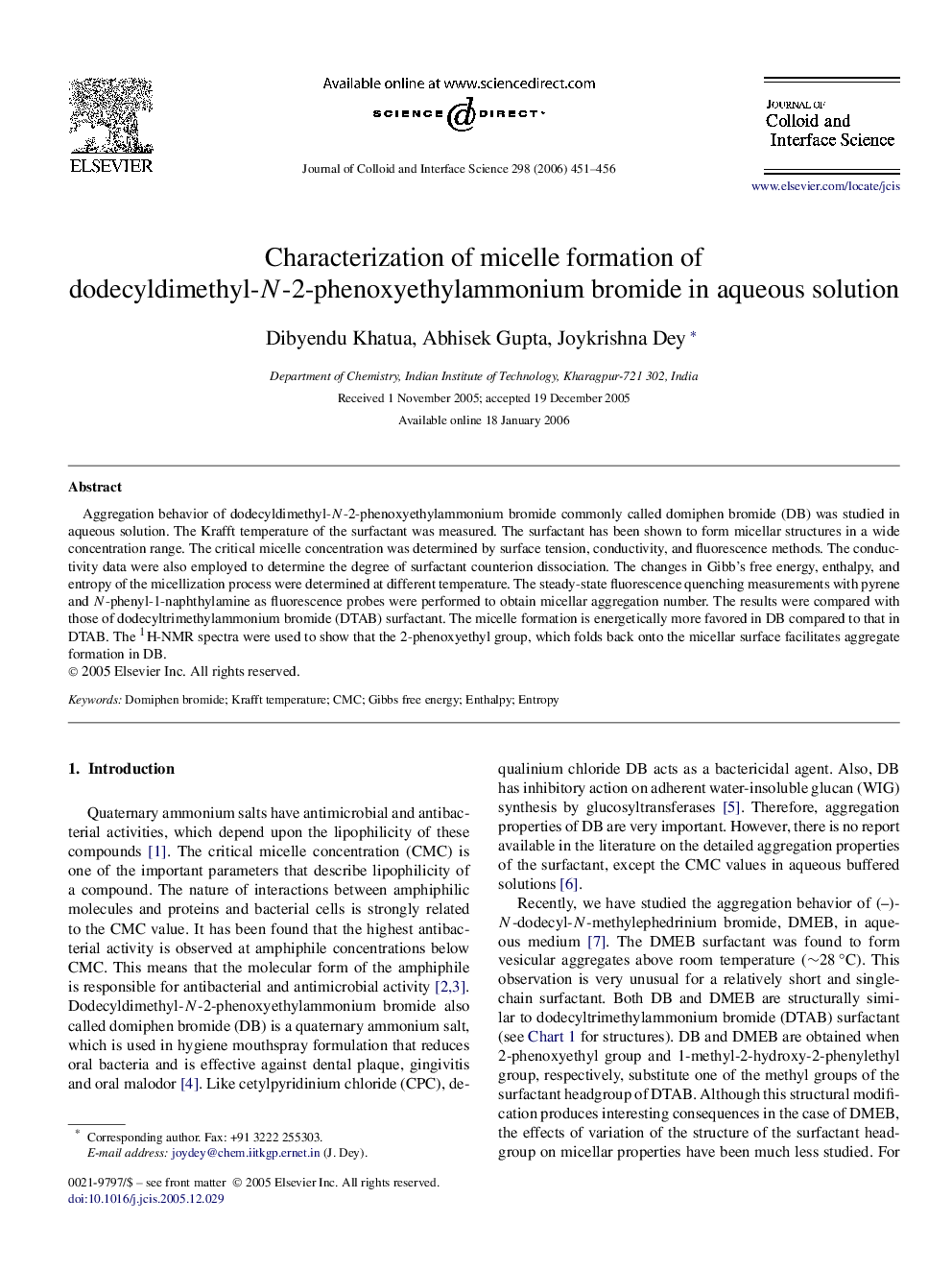| Article ID | Journal | Published Year | Pages | File Type |
|---|---|---|---|---|
| 613651 | Journal of Colloid and Interface Science | 2006 | 6 Pages |
Aggregation behavior of dodecyldimethyl-N-2-phenoxyethylammonium bromide commonly called domiphen bromide (DB) was studied in aqueous solution. The Krafft temperature of the surfactant was measured. The surfactant has been shown to form micellar structures in a wide concentration range. The critical micelle concentration was determined by surface tension, conductivity, and fluorescence methods. The conductivity data were also employed to determine the degree of surfactant counterion dissociation. The changes in Gibb's free energy, enthalpy, and entropy of the micellization process were determined at different temperature. The steady-state fluorescence quenching measurements with pyrene and N-phenyl-1-naphthylamine as fluorescence probes were performed to obtain micellar aggregation number. The results were compared with those of dodecyltrimethylammonium bromide (DTAB) surfactant. The micelle formation is energetically more favored in DB compared to that in DTAB. The 1H-NMR spectra were used to show that the 2-phenoxyethyl group, which folds back onto the micellar surface facilitates aggregate formation in DB.
Graphical abstractAggregation behavior of domiphen bromide (DB) was studied in aqueous solution. The critical micelle concentration (CMC) was determined by surface tension, conductivity, and fluorescence methods. The changes in Gibb's free energy, enthalpy, and entropy of the micellization process have been determined at different temperature. The steady-state fluorescence quenching measurements with pyrene as fluorescence probe was employed to obtain micellar aggregation number. The micropolarity and microviscosity of the micelles were estimated by use of pyrene and 1,6-diphenyl-1,3,5-hexatriene probes, respectively. The results have been compared with those of dodecyltrimethylammonium bromide (DTAB) surfactant.Figure optionsDownload full-size imageDownload high-quality image (19 K)Download as PowerPoint slide
